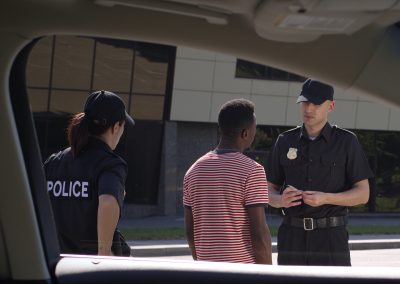As officials survey the damage done by protests across Balitmore, the question of whom to blame for it has grown shrill. Critics of the mayor, Stephanie Rawlings-Blake, have seized upon comments she made Saturday morning: “While we tried to make sure that (protesters) were protected from the cars and the other things that were going on, we also gave those who wished to destroy space to do that as well,” she said.
She has since claimed she was not lending legitimacy to the riots. She was simply stating, she said, that the city would allow space for protest. “I did not say that we were passive of it,” Rawlings-Blake said in a Monday night press conference. “I’ve never said anything to that fact.”
But others say the response to the rioting was passive and disorganized.
“I think it was a disaster,” said Delegate Jill Carter, who represents Baltimore in Maryland’s House of Delegates, the lower chamber of the state legislature.
“Too much destruction was apparently allowed to happen. I mean, if they knew in advance that this was going to happen when school let out, then I’m not sure why there wasn’t some effort to go into the schools, to maybe do something to hold students longer, to do something to prevent it rather than let it happen.”
According to Baltimore City Councilman Nick Mosby, officials were well aware that trouble was brewing. Social media throughout area high schools mentioning a “purge,” a film reference suggesting anarchy.
Mosby then went on to place much of the blame on police, who “came out with this threat yesterday that some of the local gangs were banding together and going to attack police,” Mosby told CNN. “And I think maybe that’s where their focus was, because clearly, tactically, they weren’t ready for these children. I don’t think they expected the children to be able to heighten the level of riot the way that they did starting at Mondawmin Mall.”
Carter too blames police. Baltimore police “routinely” are “super aggressive,” she said, with “zero tolerance for any kind of overactivity going on from these young people. … And yesterday they acted completely opposite to their normal behavior.”
Mayor Rawlings-Blake placed the blame on “thugs” and outside agitators on Tuesday night as fire swept the west side of the city. As a construction project burned, rioters twice cut fire hoses to ensure it kept burning.
The epicenter of the looting and rioting was troubled long before the death of 25-year-old Freddie Gray in police custody. More than a third of residents in this westside neighborhood live in poverty and it struggles with violent crime and gangs. While Gray’s family called for calm, his funeral was seen as the catalyst that sent the city into pandemonium.
Maryland Governor Larry Hogan declared a state of emergency and activated the National Guard as firefighters battled blazes set by looters who did not care to cover their faces as they committed their crimes. Several officers were attacked and had broken bones. One was hurt to the point that he is unresponsive.
President Obama from the Rose Garden said of the rioters: “They’re not protesting. They’re not making a statement. They’re stealing.” But he went on to critique the situation in more grandiose terms, which marked a sharp departure from Monday, when White House spokesman Josh Earnest called tensions between police and communities around the country “fundamentally a local issue” and said that “there does need to be a commitment from local elected leaders and local law enforcement leaders to confront this challenge and to demonstrate some determination about trying to build bridges with the citizens that they’re sworn to protect.”
Where we go from here remains to be seen.










0 Comments